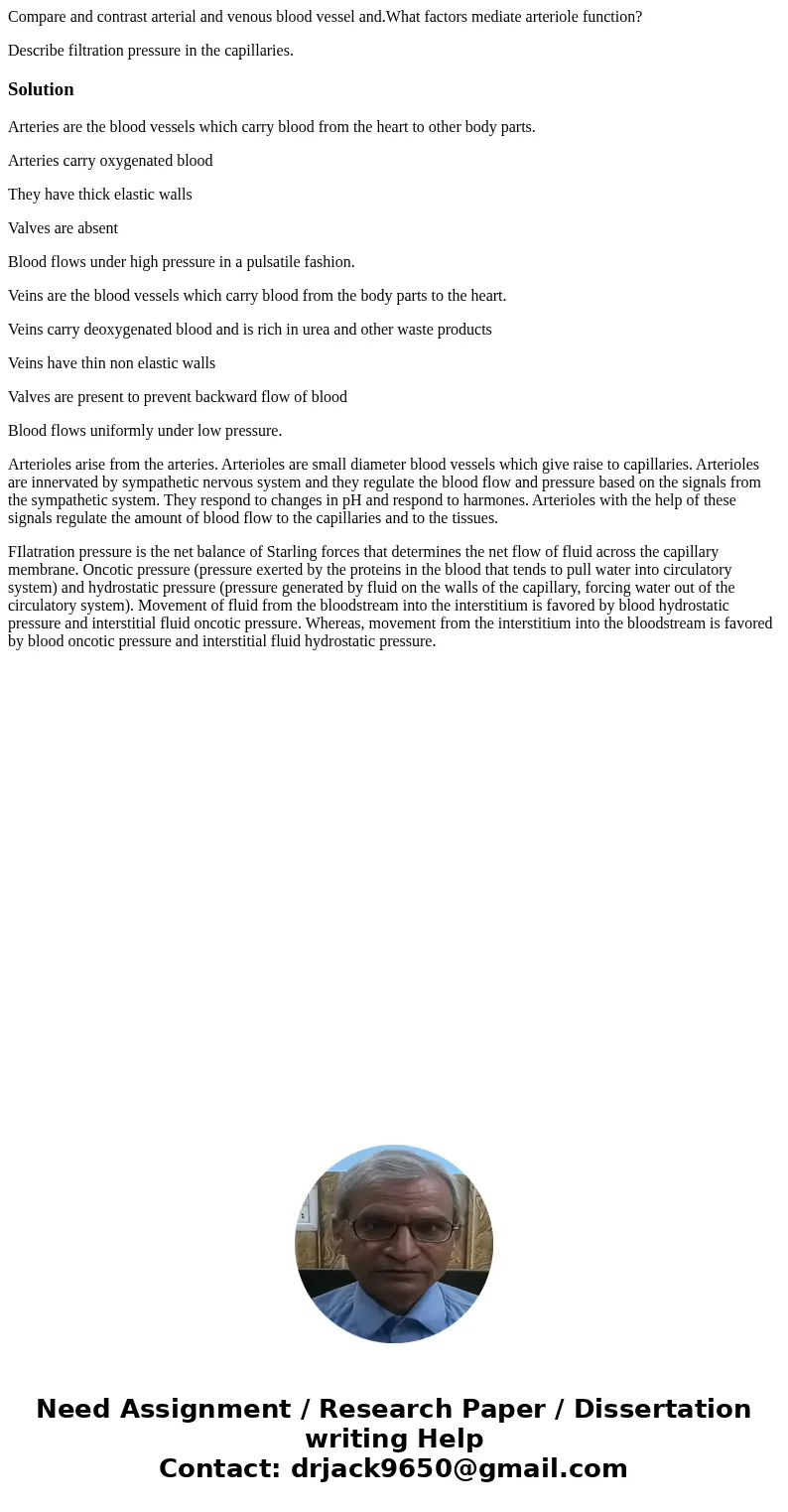Compare and contrast arterial and venous blood vessel andWha
Compare and contrast arterial and venous blood vessel and.What factors mediate arteriole function?
Describe filtration pressure in the capillaries.
Solution
Arteries are the blood vessels which carry blood from the heart to other body parts.
Arteries carry oxygenated blood
They have thick elastic walls
Valves are absent
Blood flows under high pressure in a pulsatile fashion.
Veins are the blood vessels which carry blood from the body parts to the heart.
Veins carry deoxygenated blood and is rich in urea and other waste products
Veins have thin non elastic walls
Valves are present to prevent backward flow of blood
Blood flows uniformly under low pressure.
Arterioles arise from the arteries. Arterioles are small diameter blood vessels which give raise to capillaries. Arterioles are innervated by sympathetic nervous system and they regulate the blood flow and pressure based on the signals from the sympathetic system. They respond to changes in pH and respond to harmones. Arterioles with the help of these signals regulate the amount of blood flow to the capillaries and to the tissues.
FIlatration pressure is the net balance of Starling forces that determines the net flow of fluid across the capillary membrane. Oncotic pressure (pressure exerted by the proteins in the blood that tends to pull water into circulatory system) and hydrostatic pressure (pressure generated by fluid on the walls of the capillary, forcing water out of the circulatory system). Movement of fluid from the bloodstream into the interstitium is favored by blood hydrostatic pressure and interstitial fluid oncotic pressure. Whereas, movement from the interstitium into the bloodstream is favored by blood oncotic pressure and interstitial fluid hydrostatic pressure.

 Homework Sourse
Homework Sourse